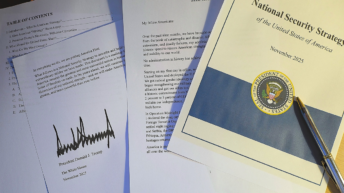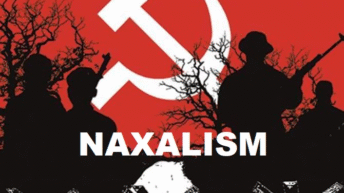
When Washington named Sergio Gor, Soviet-born Sergey Gorokhovsky, as Ambassador to India, the move surprised both seasoned diplomats and political analysts. It was not a traditional appointment plucked from the ranks of career foreign service officers but a statement; one that said more about Trump’s style of governance than about bureaucratic continuity.
The Gorokhovskys, his parents, emigrated to the United States in his teens in 1999; their journey was about survival, reinvention, and relentless pursuit of the American dream. Those early experiences should have shaped Gor’s worldview, even if he rarely wears them on his sleeve. Changing his name from Sergey Gorokhovsky to Sergio Gor was part of the Americanisation process symbolic of both assimilation and ambition.
Gor’s career did not unfold in diplomatic channels but in the trenches of Republican politics. A skilled fundraiser, strategist, and loyal Trump insider, he built deep ties across conservative networks by co-founding Winning for Women PAC, working with high-profile figures like Senator Rand Paul, and later launching a publishing house that became the preferred platform for ‘Trump world’ authors. More than his résumé, what makes him central to the current moment is his proximity to Donald Trump himself. For Trump, loyalty is currency, and Gor offer it in spades.
A Direct Line from Raisina Hill to 1600 Pennsylvania Avenue
For India, Gor’s appointment is both an opportunity and a risk. Unlike a traditional ambassador who might be hidebound by the machinery of the State Department, Gor represents something far more direct: a hotline to Trump himself. In a White House that prizes loyalty and improvisation over institutional process, Gor’s word will carry unusual weight. Indian officials accustomed to navigating multiple power centers in Washington may find in Gor a single point of entry into Trump’s inner circle.
But therein lies the paradox. A man with little diplomatic training, no deep policy portfolio, and strong partisan colouring will now be the face of U.S. diplomacy in New Delhi. For allies, this can mean agility; for adversaries, unpredictability.
The Hardball Issues: Oil, Defence and Trade
Trump’s strategy toward India has been marked by both courtship and coercion. On one hand, he has celebrated India as a “natural ally” against China. On the other, he has wielded tariffs and energy sanctions to pressure New Delhi to fall in line with his global strategy.
Trump has pressed India to cut Russian defense purchases like the S-400 missile system and reduce oil imports from Moscow, even threatening punitive tariffs of 25%, above the 25% ‘base’ ones to dissuade New Delhi from continuing purchases.
The paradox is glaring: Washington grants Beijing more calibrated treatment while describing it as the main “systemic rival” while penalising New Delhi, its supposed strategic partner. Even at the height of Trump’s trade war, China has remained a major buyer of Russian LNG and oil. India, by contrast, has faced sharper arm-twisting. Gor will be tasked with selling this asymmetric strategy to Indian policymakers, a difficult job for the most seasoned envoy.
The Oil Dilemma and Trump’s “Drill, Baby, Drill” Politics
Beneath the surface lies Trump’s deeper dilemma. It is not only about prying India away from Russian crude; it is also about keeping oil prices at levels that sustain the U.S. shale industry. America, now the world’s largest oil producer, needs Brent crude consistently above $60 to keep shale drilling viable. Trump’s rallying cry of “drill, baby, drill” captures this political-economic bind: he must keep domestic producers afloat without triggering inflationary spikes at the pump.
India, the world’s third-largest oil importer, sits squarely at the crossroads of this energy politics. Its pivot toward discounted Russian crude, rising from 2% of imports pre-Ukraine war to over 35% in 2024 is not ideological but pragmatic. For New Delhi, access to cheap energy is a survival strategy, a way of insulating itself from sanctions-driven volatility. For Trump, it represents a challenge to U.S. leverage at a time when the petrodollar order itself is fraying.
India’s Multipolar Moves
Prime Minister Modi’s recent Independence Day speech, invoking the Sudarshan Chakra, was more than a flourish of civilisational emblems; in fact it was a signal that India intends to chart its own multipolar path. New Delhi joined the Shanghai Cooperation Organization (SCO), expressed interest in re-engaging with the Regional Comprehensive Economic Partnership (RCEP), deepened ties with Japan, and leaped into BRICS+, which despite, and in part because of Trump’s threats, is rising as a platform committed to challenging Dollar hegemony.
These moves underscore India’s refusal to be boxed into a binary of U.S. alignment versus Russian dependency. Gor will find himself engaging an India that is both open to increasing ties with Washington and unapologetically committed to its strategic autonomy.
Immigrant Envoys: A Historical Lens
Gor’s appointment also invites comparison with other U.S. envoys who were products of displacement, exile, or immigrant reinvention. Zalmay Khalilzad, born in Mazar-i-Sharif, Afghanistan, became America’s point man in Kabul, Baghdad, and later at the UN. His immigrant background was seen as an asset, providing cultural fluency and a personal stake in the regions he served. Richard Holbrooke, who born in the U.S., was shaped by his parents’ refugee experience fleeing Nazi Europe, which lent him a visceral understanding of the traumas caused by authoritarianism, of which however, he was himself a practitioner.
Sergio Gor fits this lineage in form but not in function. Unlike Khalilzad, whose intellectual training and diplomatic experience prepared him for crisis mediation, or Holbrooke, whose statecraft blended toughness with empathy, Gor comes from partisan American politics. His émigré story gives him symbolic depth, but his career trajectory offers little in the way of diplomatic nuance. This makes him both a novel experiment and a potential risk: a loyalist emissary carrying Trump’s transactional instincts into one of the world’s most complex bilateral relationships.
Pakistan, China, and the Regional Chessboard
Complicating matters further, Pakistan continues to lobby Washington, sometimes with unconventional tools like crypto-financing deals,while its leadership indulges in nuclear brinkmanship. Meanwhile, Beijing looms large, its influence expanding through both economic coercion and military assertiveness. Any perception that the U.S. is harsher on India than on China risks deepening mistrust in New Delhi. Gor’s Soviet émigré background may give him better grasp of authoritarian playbooks, but he will need to convince Indian policymakers that Washington’s strategy is not inherently lopsided.
Transactionalism vs. Civilisational Compass
Ultimately, the Gor appointment crystallizes the clash of two worldviews. Trump represents a transactional, deal-driven approach to geopolitics focused on tariffs, trade-offs, and short-term wins but rooted in American exceptionalist supremacy. India, by contrast, increasingly articulates its role through a civilisational compass rooted in history, resilience, and the pursuit of balance in a fractured world order.
The Sudarshan Chakra invoked by PM Modi symbolises not only protection but also dharma signifying order, justice, and continuity. Against Trump’s brutal and arbitrary transactionalism, it projects a vision of India as a stabilising pole in a multipolar world. Sergio Gor, the Soviet-born political operator turned ambassador, will now be the hinge on which these two approaches meet. His parents’ émigré journey mirrors the larger story of East meeting West. The question is whether he can transcend Trump’s blunt tactics into a partnership that respects India’s aspirations, or whether he will deepen the very asymmetries that have kept U.S.–India ties in a state of flux.
Conclusion
The appointment of Sergio Gor is not simply a diplomatic reshuffle. It is about Trump placing a loyalist with deep political capital and a cotnroversial past at the heart of one of America’s most consequential relationships. Whether this ushers in a new era of balanced partnership or accelerates India’s pivot toward alternative power centers will depend on how effectively Gor balances his personal commitment to Trump with sensitivity to India’s civilisational statecraft.






Add comment